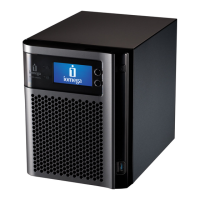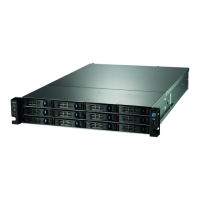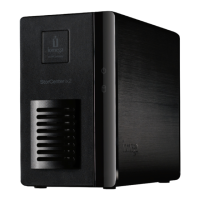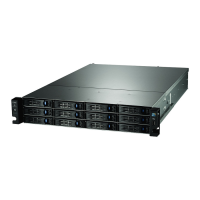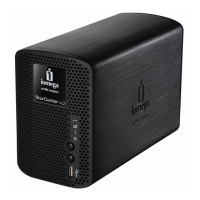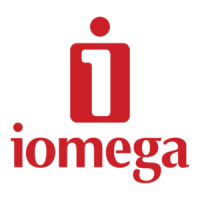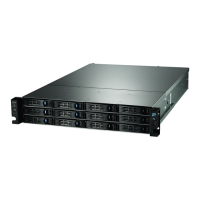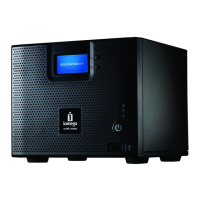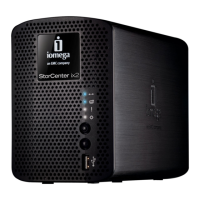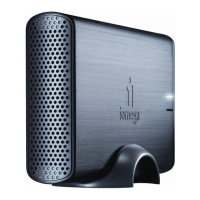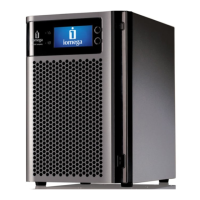
Do you have a question about the Iomega StorCenter px6-300d and is the answer not in the manual?
| Model | px6-300d |
|---|---|
| Storage Capacity | Up to 24 TB |
| Drive Bays | 6 |
| RAID Support | Yes |
| RAID Level | 0, 1, 5, 6, 10, JBOD |
| Network Interface | Gigabit Ethernet |
| Network Protocol | TCP/IP |
| Data Link Protocol | Ethernet |
| Form Factor | Tower |
| Device Type | NAS |
| Number of Hard Drives Installed | 0 |
| Hard Drive Capacity (Installed) | Varies based on configuration |
| Hard Drive Form Factor | 3.5" |
| Hard Drive Interface | SATA |
| RAM | 2 GB |
| Height | 8.5 inches |
Details the physical components and their functions on the front and rear panels of the device.
Lists the items typically included in the package with the Iomega StorCenter px6-300d.
Provides step-by-step instructions for the initial setup and connection of the device.
Explains how to configure the DMZ feature on a router to resolve double NAT situations.
Details port forwarding configuration for double NAT network setups.
Instructions on configuring a secondary router in bridging mode for network setup.
Guidance on enabling transparent bridging on the primary router.
Covers product warranty, exclusions, remedies, service, and limitations.
Describes the console interface for configuring and administering the device.
Explains the optional software for discovering and accessing storage devices.
Details the web-accessible interface for device access and management.
Provides details on share names, space usage, and content viewing.
Describes how access permissions are set for secured shares.
Lists options for configuring active folders like Email Distribution, Facebook, etc.
Instructions on how to add new shares and modify existing ones.
Explains how to set user permissions for accessing shares.
Information on creating and managing share volumes.
Steps to configure the Email Distribution Active Folder for sharing files via email.
Instructions on setting up Facebook Active Folders for automatic photo uploads.
Guide to setting up Flickr Active Folders for automatic photo uploads.
Instructions to set up a Photo Resize Active Folder for resizing photos.
Steps to set up a Torrent Active Folder for peer-to-peer file sharing.
Instructions for setting up YouTube Active Folders to upload videos.
Details on enabling and disabling write caching and its implications.
How to apply global settings like data protection (RAID) and drive management.
Explains how shares are added to volumes and the size limitations.
Steps to enable and configure iSCSI drives for high-speed network data transfer.
Guidance on connecting to iSCSI drives using Storage Manager or software initiators.
Instructions on how to add new iSCSI drives to the system.
How to set user permissions for accessing iSCSI drives.
Steps to enable Bluetooth and configure security settings for file transfers.
How to enable and configure the rsync server for secure copy jobs.
Instructions for setting up and configuring Windows DFS namespaces and links.
Steps to enable WebDAV access via HTTP or HTTPS.
How to set the default destination share for QuikTransfer copy jobs.
Steps to enable torrent downloads and configure speed settings.
How to use the QuikTransfer button to initiate copy jobs.
Steps to add new copy jobs and modify existing ones.
Configuration for the source location of copy jobs.
Configuration for the destination location of copy jobs.
How to schedule copy jobs to run automatically.
Steps to enable Mozy backup and enter account details.
How to select shares and folders for backup.
Steps to enable Time Machine backup support for Mac computers.
How to change the destination share for Time Machine backups.
Steps to enable Amazon S3 cloud backup and enter account information.
How files are backed up to Amazon S3 and limitations.
Steps to add an Avamar server for data backup and recovery.
Defines key terms related to setting up and using the Personal Cloud feature.
How to invite members and send invitations to join the Personal Cloud.
How to disconnect or reenable members from the Personal Cloud.
Steps to completely remove a member from the Personal Cloud.
How to configure automatic time synchronization using an internet time server.
Instructions for manually setting the device's date and time.
Settings to control when the device's drives power down due to inactivity.
Enabling the feature to remotely power on the device over the network.
How to schedule the device to power on and off automatically.
Detailed steps for manually downloading and installing software updates.
Instructions for backing up the device's system configuration to a file.
Steps to restore the device configuration from a saved backup file.
Instructions for manually configuring network settings like IP, DNS, and WINS.
How to bond multiple network interface cards for redundancy and increased bandwidth.
Guide on enabling jumbo frames for improved large file transfer speeds.
How to configure Virtual LANs for network segmentation.
Instructions on how to remove bonded NIC configurations.
Steps to add a Virtual LAN configuration to a network interface card.
Steps to complete remote access setup using the Basic subscription option.
Steps to complete remote access setup using the Premium subscription option.
Guide to combining media content from multiple DLNA servers.
How to enable internet access for media content sharing.
Details on camera status, space, model, and action controls.
Instructions for manually adding a video camera and configuring its settings.
How to set policies for saving recorded video files.
How to set a name to identify the device on the network.
How to set a descriptive name for the device.
How to set the workgroup name for network identification.
Steps to incorporate an existing Active Directory domain into the console.
Procedure to disable security, which deletes all users and groups.
Steps to add new users or modify existing user information.
How to grant or deny share access permissions for users.
How to set storage quotas for individual users or apply default quotas.
Explains how group memberships determine user access rights to shares.
Steps to create new groups and add users to them.
How to change group permissions for shares and iSCSI drives.
Steps to import users and groups from an Active Directory server.
How to change user/group permissions for shares and iSCSI drives.
